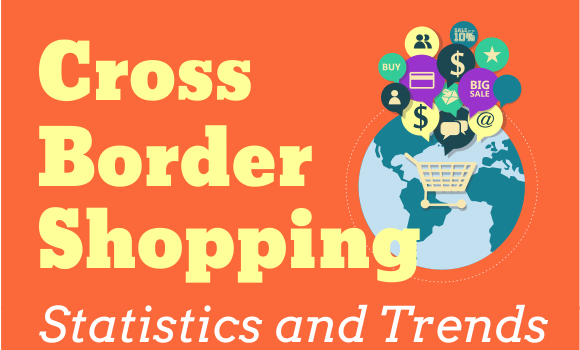How Cross-Border Ecommerce is Growing [Infographic]
June 3, 2016
The global cross-border commerce is ballooning with forecasts showing its value will hit the $ 1 trillion mark by 2020. This trend has been gaining exceptional momentum over the past few years given the fact that the size of global cross-border commerce was only $ 230 million in 2014.

In a bid to better make sense of global purchasing behavior in cross-border e-commerce, Alibaba Group’s research firm, AliResearch did a research titled “Cross-border B2C E-commerce Market Trends.” It concluded that the trend will experience a compound growth of 27.4% over the next 5 years. The forecasts show that almost 1 billion people will be cross-border buyers by the year 2020. This will account for almost a third of all worldwide transactions.
Some of the broader trends in global online shopping have been aptly captured by Ipsos research on behalf of PayPal. The report shows a growing trend of overseas shopping among prominent countries such as Canada, US, Australia, China, Singapore, Japan and India, among others. For instance, 54% of US online shoppers made overseas purchases while 67% of Canadian online shoppers made purchases abroad.
What factors have contributed to the growing trend of cross-border shopping?
First things first. The main reason people look beyond borders when shopping has to do with prices as well as unique or specialty products that aren’t available in one’s country. As the cross-border eCommerce network continues to develop, online shoppers discover new or cheaper products overseas. 59% of millennial say they buy products online because they are fashionable and cheaper.
Technology has also made it possible for shoppers to discover products abroad. Today’s buyer is well versed with various products produced by various countries as well as the purchasing, shipping and taxation processes involved, thanks to technology. Smartphones and tablets have been the main catalysts in the rise of cross-broader shopping. Millennial are open to adopting new technologies that enhance online shopping experience
Cross-border obstacles
Cross-border shopping is not always a smooth sailing. Consumers who are considering cross-border shopping say high shipping costs as well as long delivery periods as the main obstacles they face. Some consumers have also complained about inferior products that don’t match description. Transactional security issues is also another morale killer.
That notwithstanding, cross-border shopping presents a great opportunity for businesses and marketers to exploit. The days of being confined to the narrow confines of one’s country borders are long gone. It is time to expand the e-commerce boundaries and reap the rewards of overseas shopping.
Digital & Social Articles on Business 2 Community
(66)

![How Cross-Border Ecommerce is Growing [Infographic]](https://www.devicedaily.com/wp-content/uploads/2016/06/crossborder-shopping-infographic-header-580x350-520x314.png)

